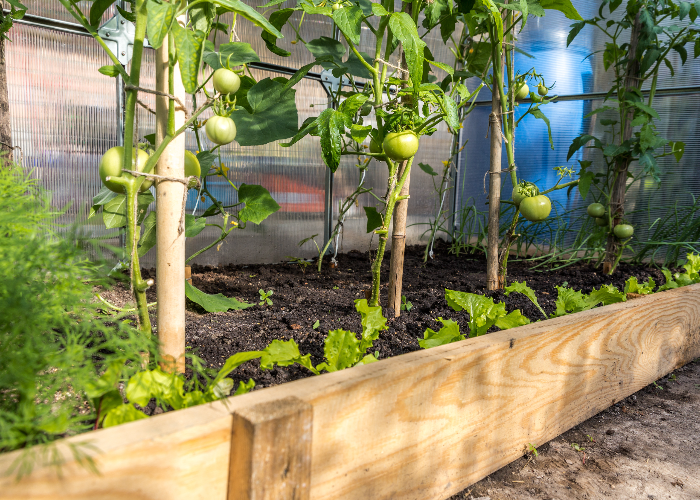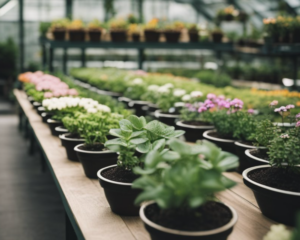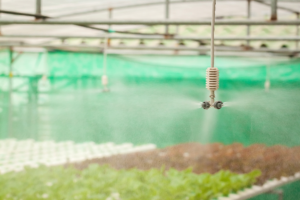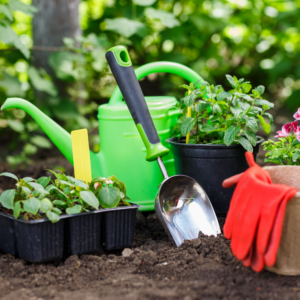Dive into the ultimate guide for raised garden bed greenhouses! This article is your one-stop resource for all things related to setting up and keeping a raised garden bed greenhouse flourishing. Perfect for gardening newbies and experienced green thumbs alike, we’ve packed this guide with tips and tricks to enhance your gardening journey.
What Is a Raised Garden Bed Greenhouse?
A raised garden bed greenhouse combines the benefits of raised garden beds with the protective environment of a greenhouse. It’s a fantastic solution for gardeners looking to boost their plant-growing capabilities. Here’s why they’re becoming a popular choice:
- Longer Growing Season: With a raised garden bed greenhouse, you’re not limited by the seasons. It creates a cozy home for plants to grow earlier in spring and later into fall than they could outdoors.
- Less Pest Trouble: Its elevated design keeps many ground pests at bay, reducing the risk of them munching on your plants.
- Perfect Growing Conditions: A greenhouse cover lets you manage the inside climate—temperature, humidity, and air movement—so plants get the ideal conditions they need to thrive.
- Better Soil Control: You have complete control over the soil in a raised bed, leading to better drainage and healthier plants.
Types of Raised Garden Bed Greenhouses
There’s a style of raised garden bed greenhouse for every type of gardener, from hobbyists to those with a more serious green thumb. Here are a few you might consider:
- Wooden Frames: Classic and sturdy, these bring a natural look to your garden while providing solid support for a greenhouse cover.
- Steel Frames: If you’re looking for durability, a steel frame is tough against the elements and offers long-lasting structure.
- Plastic PVC Frames: Lightweight and cost-effective, PVC frames are great for those exploring greenhouse gardening without committing to a permanent structure.
- DIY Options: For the handy gardener, creating a custom raised garden bed greenhouse can be a rewarding project that meets your specific needs.
- Adjustable Heights: These innovative designs allow you to modify the height of the greenhouse cover as plants grow, offering flexibility throughout the season.
Each type has its own set of advantages, so consider what best fits your gardening style, the kinds of plants you want to grow, and your climate when making a choice.
Finding the Perfect Spot
Sunlight and Shade: Balancing Act

Picking the right spot for your raised garden bed greenhouse involves a bit of sun and shade strategy. Here’s how to get the balance right:
- Soaking Up the Sun: Most veggies and herbs love basking in at least 6 hours of sunlight daily. But, it’s good to know that leafy greens and some other crops don’t mind a bit of shade. Watching how the sun moves across your potential spot can help you plan the perfect setup.
- Cooling Off in the Shade: Too much of a good thing, like sun, isn’t always best, especially in the scorching midday heat. Using shade cloths or planting taller plants to cast a natural shadow can protect your more sun-sensitive plants.
By tuning into the specific light needs of your plants, you’ll ensure they get just the right amount of sunlight for optimal growth, making your greenhouse a thriving haven.
Guarding Against the Wind
Choosing a location also means thinking about wind protection. Shielding your plants from harsh winds will keep them happy and healthy. Here’s what you need to consider:
- Seek Natural Shelter: Place your greenhouse where it’s naturally protected from the wind by fences, buildings, or dense vegetation.
- Create Windbreaks: Planting a line of tall shrubs or trees can act as a natural barrier against the wind, adding an extra layer of protection.
- Barrier Up: Installing windbreak fabric or mesh around your greenhouse can keep those strong gusts at bay, especially when the weather turns blustery.
- Securely Anchor: Make sure your greenhouse structure is firmly fixed to the ground to withstand windy days.
- Watch the Wind: Knowing which way the wind usually blows in your area helps in positioning your greenhouse to minimize wind exposure.
Incorporating these wind protection strategies will ensure your raised garden bed greenhouse remains a calm, stable environment for your plants to flourish.
Accessible and Handy
Picking a spot for your raised garden bed greenhouse isn’t just about the plants; it’s also about making sure you can get to and work in your garden with ease. Here are the essentials for ensuring accessibility and convenience:
- Proximity to Water Source: Having your greenhouse close to a water source is a game-changer. Whether it’s a nearby hose, a rain barrel setup, or another solution, easy water access means simpler watering routines.
- Pathways and Entryways: Think about how you’ll get to your greenhouse. Clear paths and accessible entrances are a must, especially if you’ll be carting tools and supplies back and forth.
- Storage Space: You’ll want your gardening gear within arm’s reach, so plan for some storage space close by. This could mean a shed, a storage box, or even shelves inside the greenhouse.
- Utility Connections: Planning on adding lights or a heating system? Check that your chosen spot makes connecting to electricity or other utilities hassle-free.
Setting the Stage for Your Garden
Soil Preparation

Prepping the site where your raised garden bed greenhouse will sit is crucial for plant health. Here’s how to get your soil ready for action:
- Clear the Area: Start with a clean area by removing any debris, stones, and unwanted plants. This ensures nothing gets in the way of your soil’s quality.
- Soil Testing: Test your soil to learn about its pH and what nutrients it has (or lacks). This info will help you tailor the soil to suit your plants perfectly.
- Amend the Soil: Use your soil test results to enrich the soil with organic matter, compost, and the right nutrients. A well-amended soil supports healthy plant roots and holds moisture better.
- Double Digging: Double digging might sound like a chore, but it’s worth it. Loosening the soil improves drainage and air flow, making a happy home for plant roots.
- Leveling: Make sure the top of your soil is level to help with even water distribution and to keep plants securely in place.
Setting the Foundation: Leveling the Ground
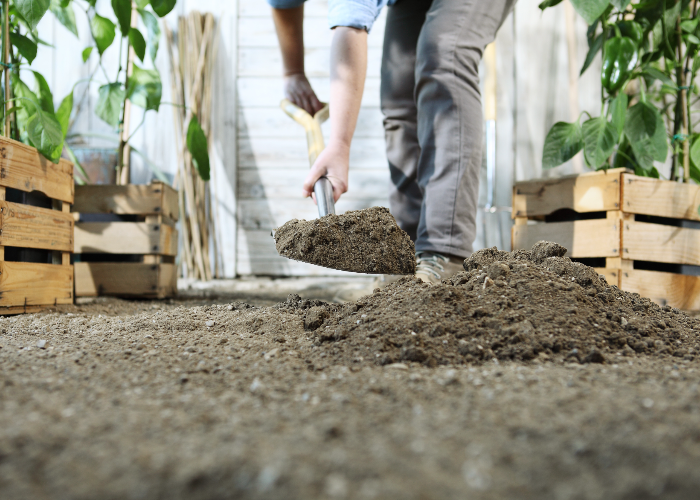
Getting the ground level before you start building your raised garden bed greenhouse is vital. A level base means your structure will be stable and secure. Here’s how to ensure a solid foundation:
- Check for Evenness: Use a long, straight board and a spirit level to ensure the ground is perfectly flat.
- Clear the Area: Get rid of any rocks, branches, or debris that could get in the way of creating a smooth base.
- Stabilize the Base: Adding a retaining wall or a layer of gravel can help create a more stable and level foundation for your greenhouse.
- Mind the Drainage: Make sure water can flow away from your greenhouse to prevent any water buildup underneath.
Drainage Matters
Proper drainage is non-negotiable when setting up your raised garden bed greenhouse. It keeps water from pooling, protecting your plants from waterlogging and diseases like root rot. Here’s how to ensure you have proper drainage:
- Survey the Slope: Take a look at how the ground slopes and plan accordingly to ensure water drains away from your greenhouse.
- Add a Permeable Layer: A layer of gravel or crushed stone beneath your greenhouse can enhance soil drainage, keeping water flow in check.
- Consider a French Drain: For extra drainage support, installing a French drain around your greenhouse area can effectively channel excess water away, keeping your plants happy and healthy.
Constructing Your Raised Garden Bed Greenhouse
Building the Frame
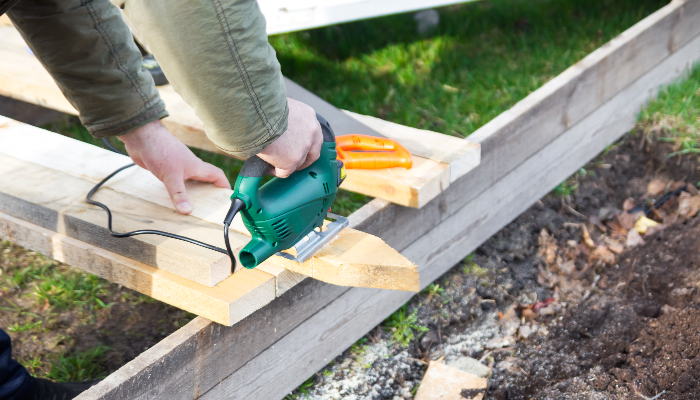
Creating a solid foundation for your raised garden bed greenhouse starts with constructing a sturdy frame. Here’s what you need to focus on to ensure your greenhouse stands the test of time:
- Choosing the Right Materials: Go for materials that can brave the elements without a hitch. Cedar, redwood, or pressure-treated lumber are great picks because of their durability and resistance to rot and pests.
- Planning the Size: The dimensions of your frame depend on how much room you have and what you plan to grow. Think about the height, width, and length you’ll need to give your plants plenty of space to flourish.
- Strong Connections: The strength of your frame lies in how well its parts are joined together. Techniques like mortise and tenon, lap joints, or using corner brackets will help keep everything tight and sturdy.
- Securing the Frame: Don’t let a gusty day worry you. Adding anchor points or brackets to fasten your frame to the ground can keep your greenhouse firmly in place, even when the weather gets wild.
- Thinking Ahead: If you might want to enlarge your greenhouse down the line, design your frame with modularity in mind. This allows for easy adjustments and expansions to fit your future gardening adventures.
By paying careful attention to these aspects, the frame of the raised garden bed greenhouse can be constructed to provide a durable, versatile, and reliable foundation for the entire structure.
Choosing the Right Greenhouse Cover

Picking the perfect cover for your raised garden bed greenhouse is key to shielding your plants and nurturing an ideal growth environment. Each type of covering has its own set of benefits:
- Polycarbonate Panels: Renowned for their strength and insulation properties, these panels are a go-to for many gardeners. They guard against UV rays while scattering light evenly, creating a cozy habitat for your plants.
- Polyethylene Film: If you’re looking for an economical yet effective solution, polyethylene film is your best bet. It lets in plenty of light and keeps your plants safe from harsh weather, although it might require changing out a bit more often.
- Acrylic Panels: For crystal-clear visibility and enduring color stability, acrylic panels are top-notch. They provide excellent UV protection and are both light and robust, making them an outstanding option for your greenhouse.
Before you start with the installation, double-check that your greenhouse frame is up to the task. It might need extra braces or supports to carry the weight and handle the wind load of your chosen covering material, ensuring your greenhouse stands strong for seasons to come.
Implementing Ventilation in Your Greenhouse
Ensuring your raised garden bed greenhouse has proper ventilation is essential for keeping your plants healthy and thriving. A good ventilation setup helps manage temperature, moisture, and fresh air flow. Here’s what you need to know about setting up an effective ventilation system:
- Natural Air Flow: Make the most of nature’s breeze with windows, vents, or louvers. Place these openings thoughtfully to let warm air out and cool, fresh air in, keeping your greenhouse environment balanced.
- Mechanical Air Movement: For those times when the air is still, or you need to tackle heat spikes, fans or blowers come to the rescue. They help maintain steady air movement, preventing hot spots and ensuring every plant gets a breath of fresh air.
- Smart Ventilation: Automated systems take the guesswork out of ventilation. Set them up to adjust based on temperature and humidity, and they’ll make sure your greenhouse conditions are always just right for your plants.
- Keep an Eye on Things: Regular checks on your greenhouse’s climate let you fine-tune your ventilation strategy. Adjust as necessary to keep things ideal for your plant’s growth and well-being.
Planting and Maintaining Your Garden
Choosing the Right Crops
Picking the right crops for your greenhouse garden is crucial for reaping a plentiful harvest. Keep these considerations in mind to ensure your gardening success:
- Adapt to Your Climate: Opt for plants that are well-suited to your area’s climate. Factors like the required temperature, humidity, and sunlight should guide your crop selection to ensure they flourish.
- Smart Space Management: Look for crops that efficiently utilize the available space. Vertical planting, intercropping, and companion planting are clever strategies to boost your greenhouse’s productivity.
- Plan for the Seasons: By choosing a variety of crops that mature at different times, you can enjoy a continuous harvest all year. Succession planting and understanding growth cycles will keep your garden bountiful across seasons.
- Soil and Nutrition Needs: Every crop has its unique soil and nutrient preferences. Tailor your soil’s pH and nutrient makeup to match the needs of your chosen plants for optimal growth.
- Choose Resilient Varieties: Focus on plants that are naturally resistant to pests and diseases common in greenhouse settings. This approach minimizes the reliance on chemicals and fosters a more sustainable garden ecosystem.
Watering and Fertilization
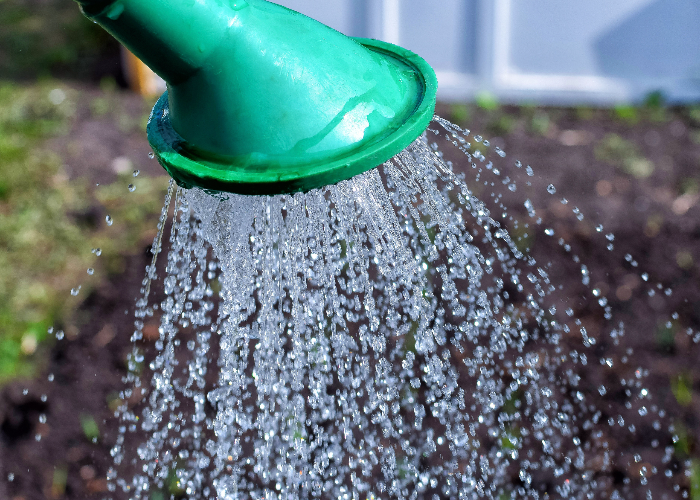
Keeping your greenhouse garden lush and productive hinges on getting watering and fertilization just right. Here’s how to make sure your plants are well-nourished and hydrated:
Watering:
- Regular Routines: Consistency is key in watering your greenhouse crops. Keep an eye on soil moisture and tailor your watering to meet the unique demands of each plant type.
- Efficient Irrigation: Employ soaker hoses or a drip irrigation system for targeted watering. This method helps conserve water, ensures it reaches the roots directly, and minimizes disease risk by keeping foliage dry.
- Adjust for the Weather: Be especially attentive during warm, dry spells. Plants may need more frequent watering to combat heat stress.
Fertilization:
- Select the Right Fertilizer: Opt for a balanced, slow-release fertilizer that suits your greenhouse plants. Greenhouse-specific or general-purpose fertilizers can provide a steady supply of nutrients.
- Follow Directions: Use fertilizers as directed, and consider the benefits of organic options to nurture your plants in a sustainable manner.
- Tailor to Your Plants’ Needs: Pay close attention to what your plants are telling you. Adjust your fertilization plan based on their growth phase, visible health signs, and the changing seasons.
Pest and Disease Management
Keeping your greenhouse garden flourishing means staying ahead of pests and diseases. A proactive, integrated approach can help protect your plants without harming the ecosystem.
Integrated Pest Management (IPM) involves blending biological, cultural, and sometimes chemical tactics to keep pests and diseases at bay. Favoring natural predators, selecting pest-resistant varieties, and opting for organic solutions help preserve your greenhouse’s health.
- Aphids
- Whiteflies
- Spider Mites
- Thrips
- Mealybugs
Each of these pests requires a specific strategy to manage effectively and prevent them from taking over your garden.
To stave off diseases, focus on cleanliness, ensuring adequate airflow, and choosing disease-resistant plant varieties. Regular checks and immediate action at the first signs of trouble are key to controlling any outbreak.
Organic solutions like neem oil, insecticidal soap, and beneficial nematodes offer eco-friendly ways to tackle pests and diseases, safeguarding both your garden and its natural allies.
Final Thoughts
In summary, a raised garden bed greenhouse is a dynamic space for growing a diverse array of plants. From selecting the perfect spot and preparing your site to building your greenhouse and keeping conditions ideal, each step is a chance to enhance your gardening experience. Dive into the world of raised garden bed greenhouses and enjoy the journey towards abundant, year-round harvests. Embrace the adventure of greenhouse gardening for rewarding results that extend beyond the seasons.
FAQs
- How tall should raised greenhouse beds be? Optimal heights are 8-12 inches for adequate soil depth while minimizing bending. Taller 18-24 inch beds may be better for those with mobility limitations.
- Is supplemental lighting needed in a greenhouse?
Yes, supplemental LED grow lights can extend growing seasons by boosting light levels when natural light is insufficient for plant needs. - How can I heat my greenhouse in winter? Heating options include electric/gas heaters, hot water pipes, or soil heating cables/mats. Proper insulation and ventilation also aid temperature regulation.
- Can I grow different crops together in raised beds? Yes, companion planting allows combining crops with complementary growth habits and nutrient needs as long as their environmental requirements are compatible.
- How do I prevent greenhouse overheating? Provide ample roof and side venting, use shade cloths, install evaporative coolers/misters, and consider automated vent openers linked to thermostats.

